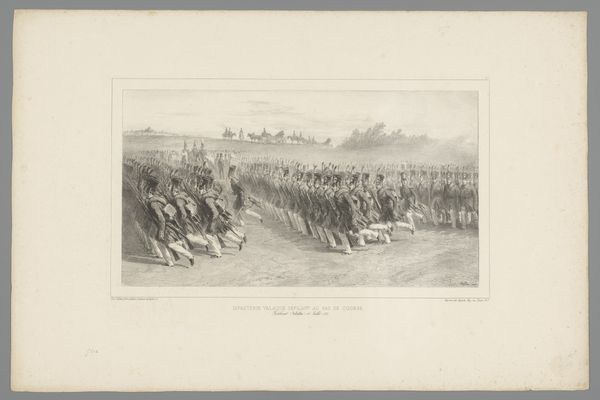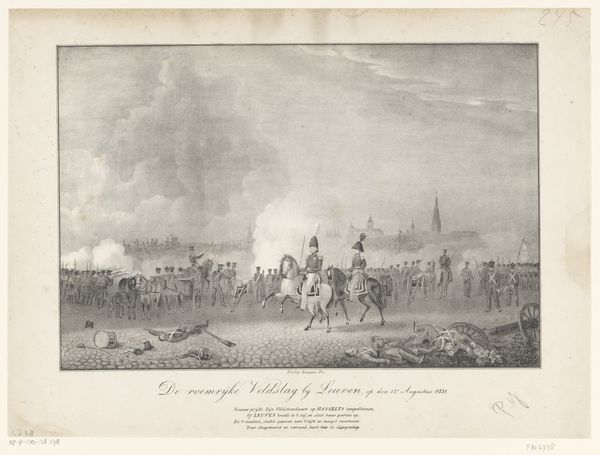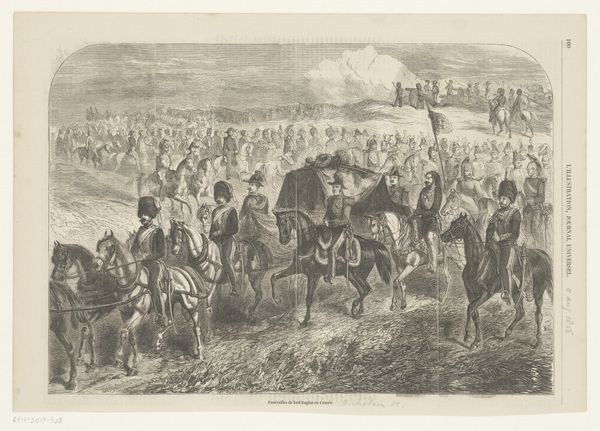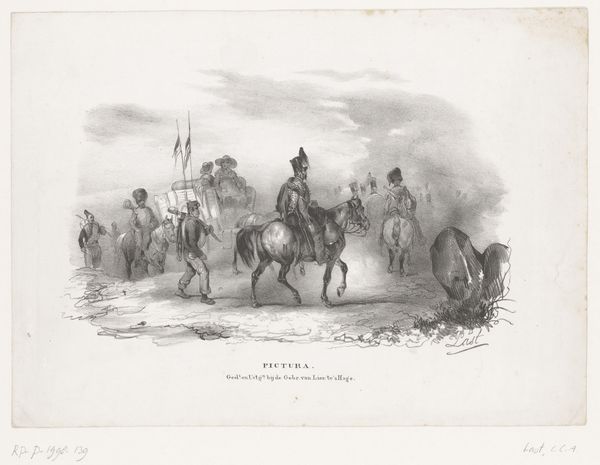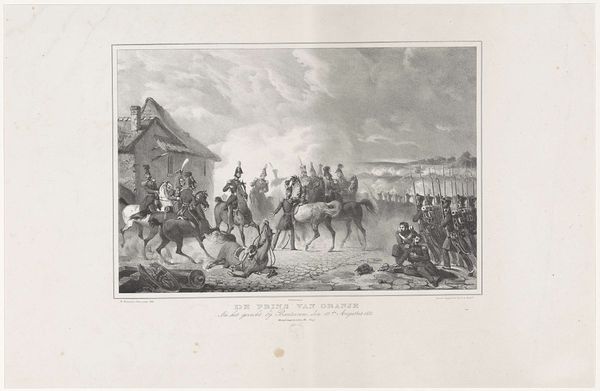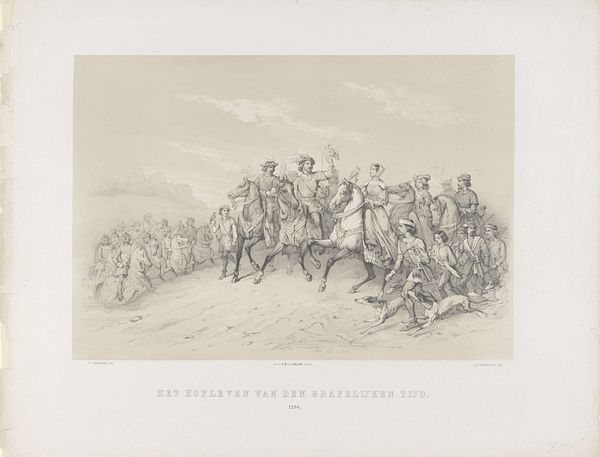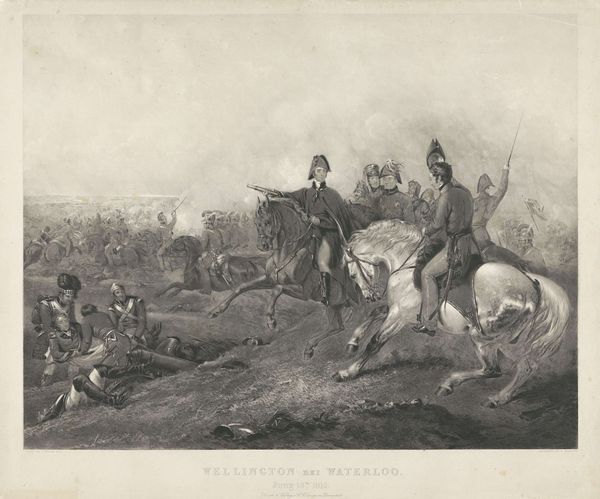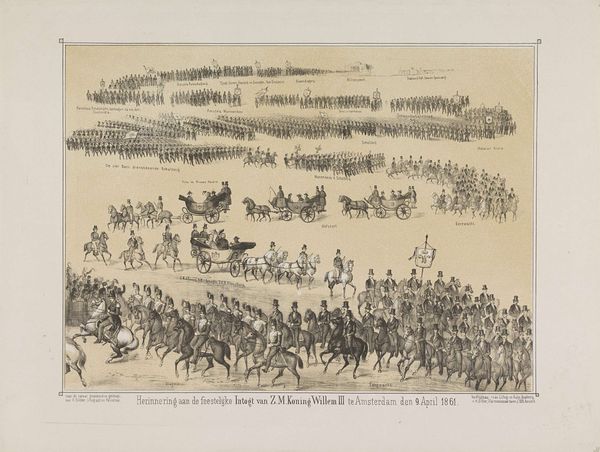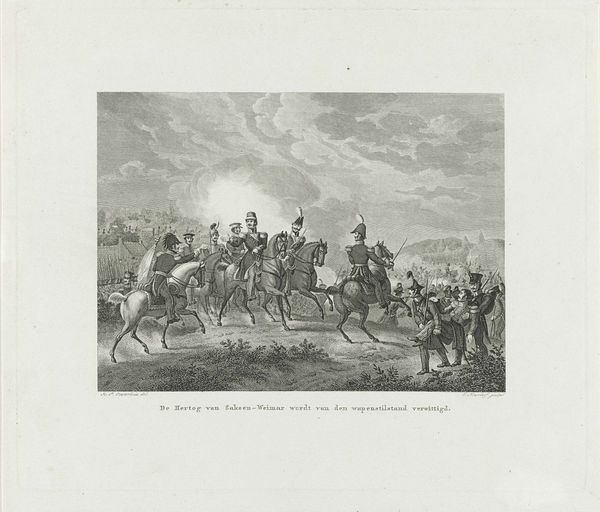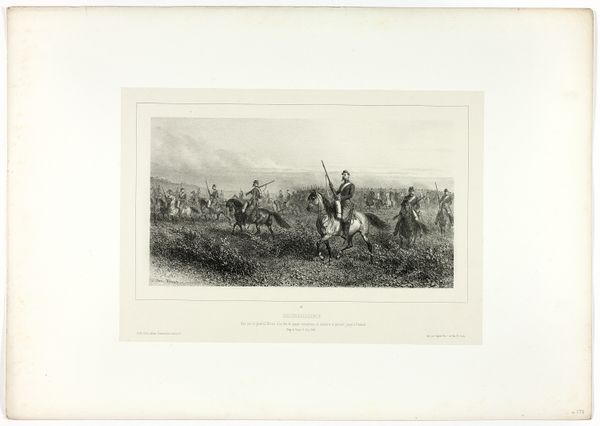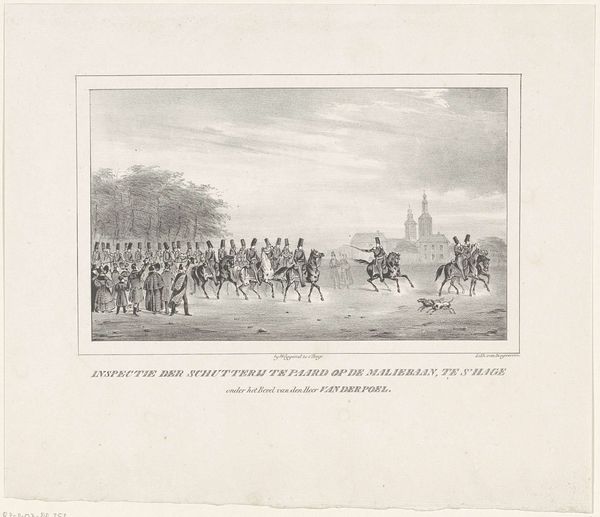
drawing, print, etching, paper
#
pencil drawn
#
drawing
#
narrative-art
# print
#
etching
#
pencil sketch
#
landscape
#
paper
#
romanticism
#
watercolour illustration
#
history-painting
Dimensions: height 268 mm, width 376 mm
Copyright: Rijks Museum: Open Domain
Curator: Raffet's 1836 etching, “Soldaten lopen volgzaam achter Napoleon Bonaparte aan,” at the Rijksmuseum, offers a fascinating glimpse into the cult of personality surrounding Napoleon. Editor: My immediate impression is one of melancholic resignation. The gray scale lends it a somber mood. There's this almost ghostly quality to the figures receding into the distance, especially those following Napoleon. Curator: Absolutely. The image is a product of its time, emerging during a period of intense political and social upheaval following the Napoleonic era. Raffet clearly grapples with the lasting impact of Bonapartism. Consider the composition – Napoleon is positioned centrally, but is still shrouded somewhat, indicating that we're also viewing Napoleon's legacy from a particular, burdened viewpoint. Editor: It strikes me as more critical than celebratory. Note the rigid, almost automaton-like way the soldiers trudge along. There's little individuality; they are consumed by something bigger. What does the slight recession and gray tone indicate about the relationship to nationalism and the figure head. Curator: That’s key. The etching implicitly critiques the notion of unquestioning loyalty and the dehumanizing aspects of war, connecting to wider discourses on French identity in a post-Napoleonic society, grappling with its imperial past. The work uses romanticism, with dramatic landscape techniques, to subtly underpin a sense of foreboding. It makes the viewer think of Napoleon's retreat to Waterloo. Editor: Exactly. Viewing the piece through the lens of postcolonial theory, we can also explore how Napoleon's imperial ambitions affected marginalized groups, who became subsumed by his vision. Curator: The role of institutions in shaping public opinion cannot be overstated. Prints like these, circulated widely, fostered certain narratives and controlled political imaginaries. I think, through that, it reminds us that history painting isn't just a document, but can be interpreted as powerful commentary. Editor: Agreed. The effectiveness of the work makes me consider its continued relevance in relation to modern issues about power. It pushes me to rethink the impact authority and unquestioned nationalism can have on populations and individuals alike.
Comments
No comments
Be the first to comment and join the conversation on the ultimate creative platform.

